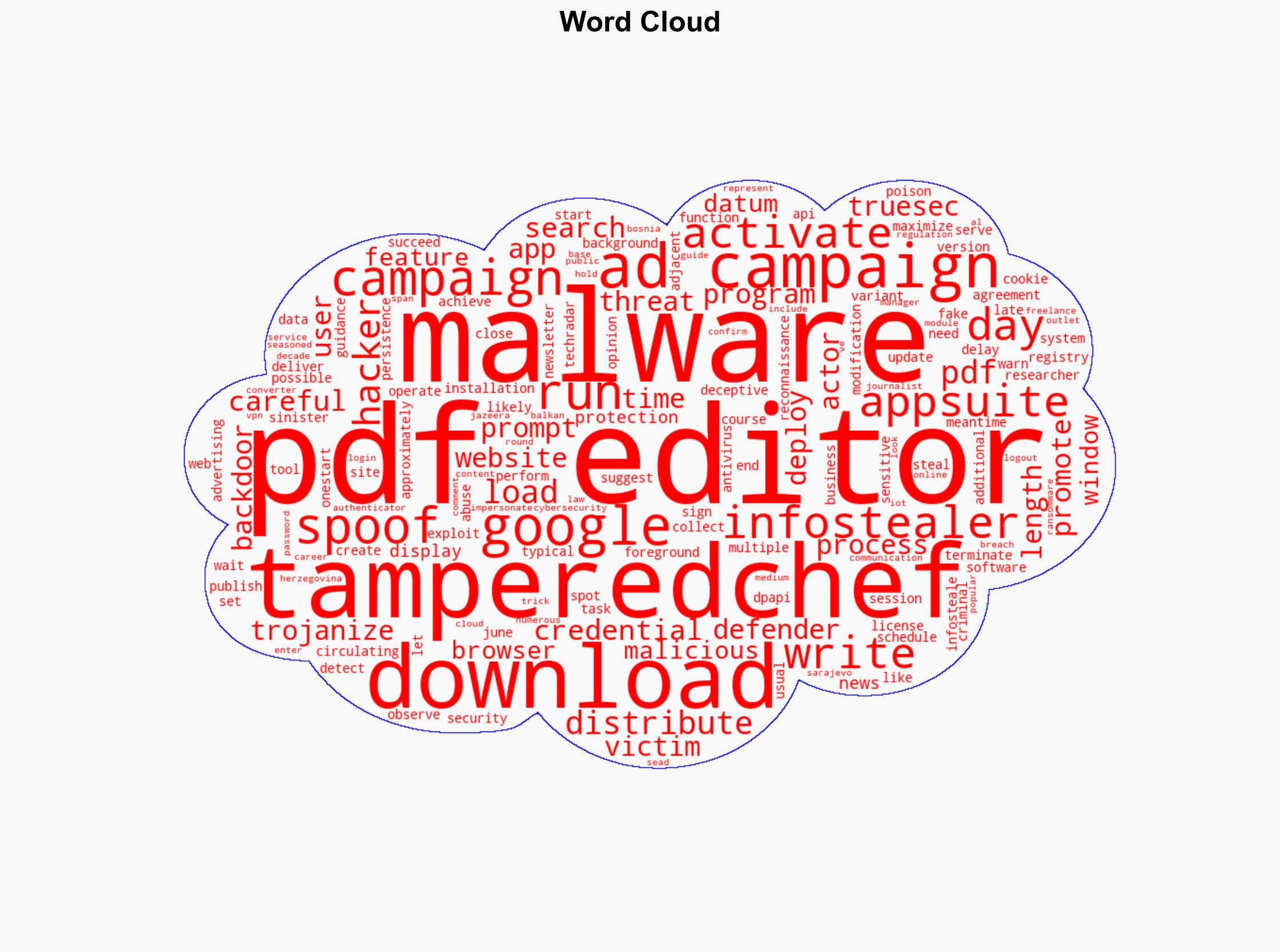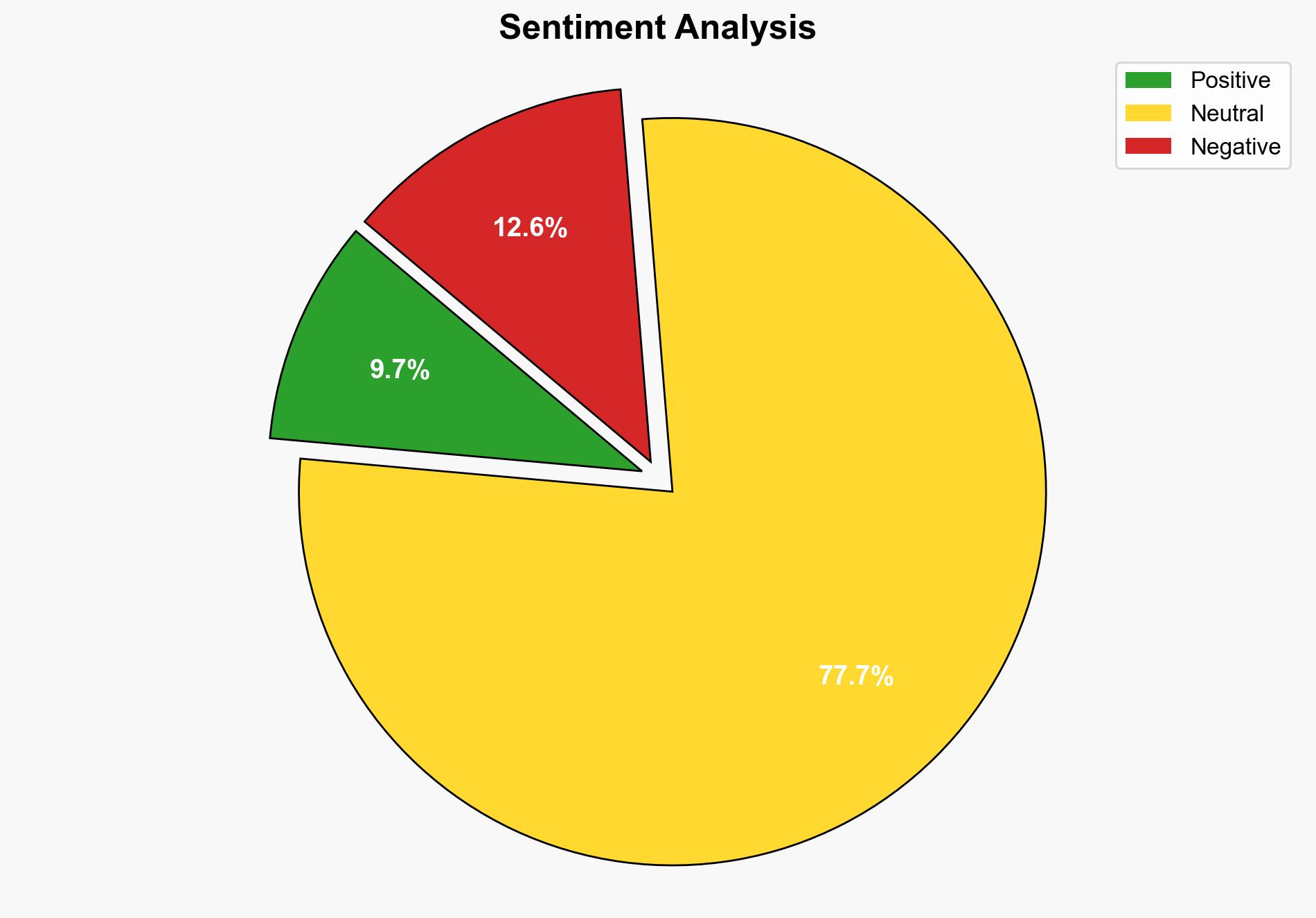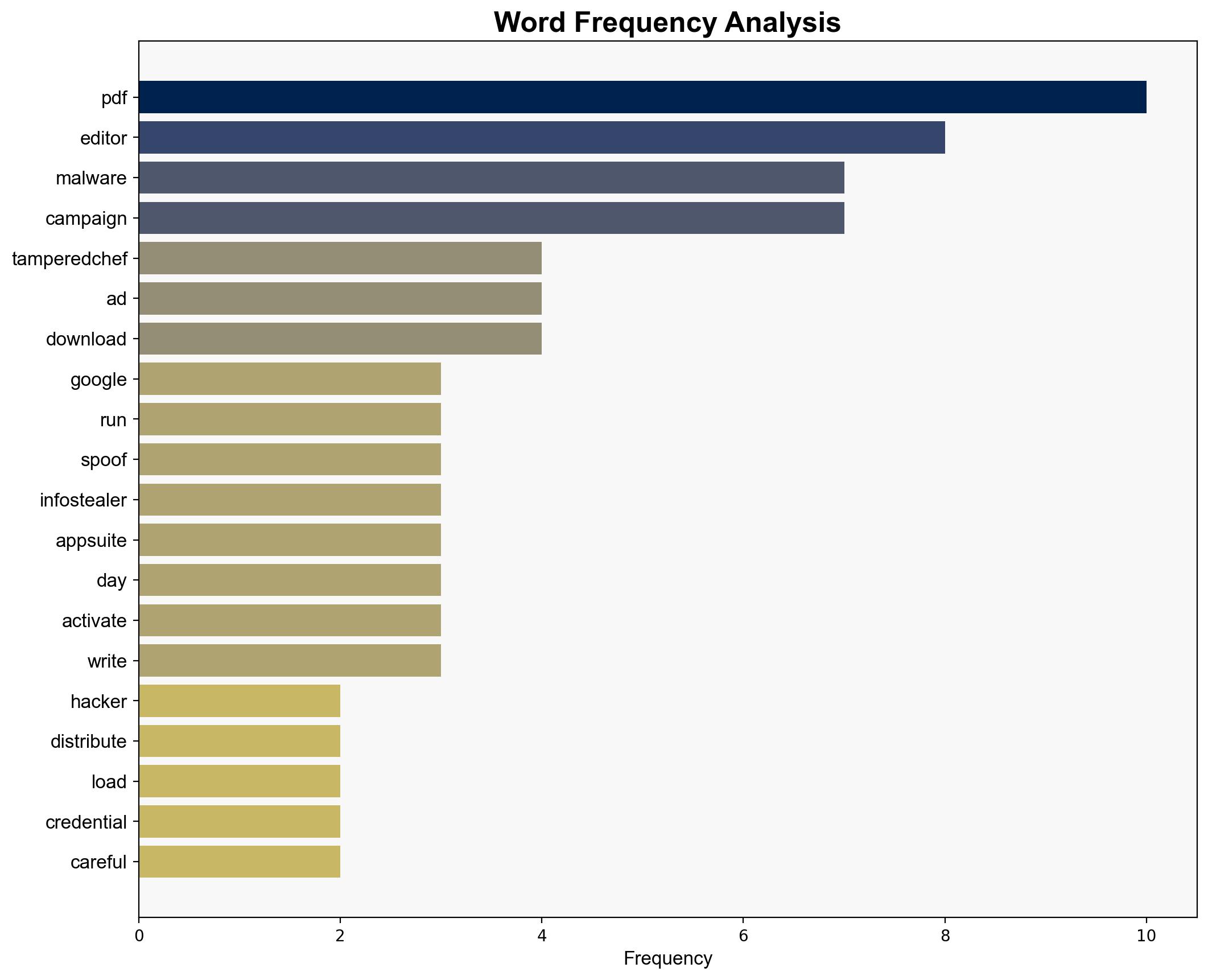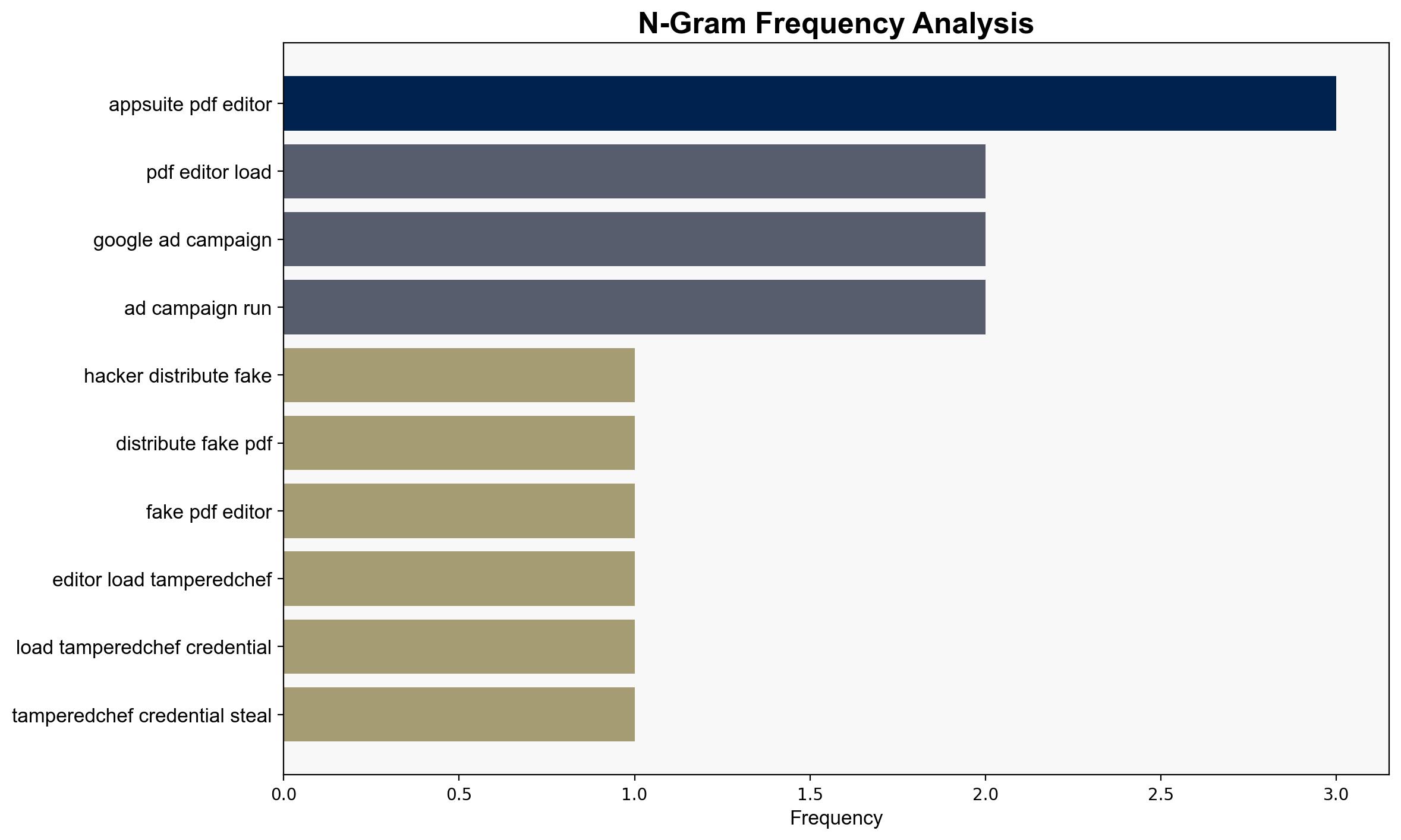Hackers are distributing a fake PDF Editor loaded with TamperedChef credential stealing malware – TechRadar
Published on: 2025-08-29
Intelligence Report: Hackers are distributing a fake PDF Editor loaded with TamperedChef credential stealing malware – TechRadar
1. BLUF (Bottom Line Up Front)
The most supported hypothesis is that a sophisticated cybercriminal group is using a fake PDF editor, Appsuite, to distribute the TamperedChef malware through a Google ad campaign. This operation is likely aimed at harvesting sensitive credentials and maintaining long-term access to compromised systems. Confidence level: High. Recommended action: Increase monitoring of ad networks for malicious campaigns and enhance user awareness regarding software downloads.
2. Competing Hypotheses
1. **Hypothesis A**: A sophisticated cybercriminal group is deliberately using a fake PDF editor to distribute TamperedChef malware, aiming to steal credentials and maintain persistent access to victim systems.
2. **Hypothesis B**: The campaign is a broader cyber-espionage operation by a state-sponsored actor, using the malware as a tool for gathering intelligence on specific targets.
Using ACH 2.0, Hypothesis A is better supported due to the focus on credential theft and the use of a common software impersonation tactic, which aligns with typical cybercriminal behavior. Hypothesis B lacks direct evidence of state-sponsored motives or specific targeting patterns.
3. Key Assumptions and Red Flags
– **Assumptions**: It is assumed that the primary goal is credential theft rather than broader espionage. The use of Google ads is assumed to be a deliberate tactic to maximize reach.
– **Red Flags**: The delay in malware activation could indicate more complex objectives. The absence of clear attribution to specific actors leaves room for uncertainty.
– **Blind Spots**: Lack of detailed information on the geographic distribution of victims and potential links to other known campaigns.
4. Implications and Strategic Risks
The campaign could lead to widespread credential compromise, affecting both individuals and organizations. If linked to state-sponsored actors, it could escalate into a significant cyber-espionage threat. The use of legitimate ad networks for distribution highlights vulnerabilities in digital advertising platforms.
5. Recommendations and Outlook
- Enhance monitoring of digital ad networks for malicious campaigns.
- Conduct awareness campaigns to educate users on the risks of downloading software from unverified sources.
- Scenario-based projections:
- Best Case: Rapid identification and shutdown of the campaign, minimizing impact.
- Worst Case: Widespread credential theft leading to significant financial and reputational damage.
- Most Likely: Continued distribution with moderate impact, prompting increased cybersecurity measures.
6. Key Individuals and Entities
– **Truesec**: Security researchers who identified the campaign.
– **Sead**: Journalist reporting on the issue.
7. Thematic Tags
national security threats, cybersecurity, counter-terrorism, regional focus





